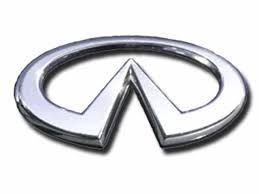M30 V6-181 3.0L (1990)

in the towel may produce scratches in the paint.
Buffing Procedure
Swirl marks, minor scratches, and transportation damage vary in depth, but can be removed using the following buffing procedure:
1.
Always wash and buff in a shaded area. The vehicle paint must be clean and cool to the touch.
2.
Wash and dry the vehicle before buffing.
3.
A dual action sander with buffer attachment and foam pad (P/N W-5500) is the safest method for buffing without swirl marks. A rotary buffer at
1200 to 1700 rpm with foam pad (P/N W-1000) may also be used.
4.
Apply liquid # 11 to the foam pad and place it on the panel to be buffed.
Before starting the buffer, spread the liquid over the surface with the pad.
5.
Hold the buffer flat against the surface while buffing. Move slowly across the surface using long, straight overlapping passes. Do not buff dry.
Wipe the residue with a clean, soft terry cloth towel.
6.
Evaluate the results. Spray on the wax remover and wipe with a clean terry cloth towel and repeat spraying/wiping as necessary. Check the surface
under full sunlight at various angles. If outdoor inspection is not possible, use shop trouble lights to reveal swirl marks. A 300 watt quartz halogen
light found at home supply/hardware stores is excellent for this. Fluorescent light doesn't fully reveal swirl marks and light scratches.
7.
If faint swirl marks or scratches remain, repeat the application of the Quick-Step # 11. Evaluate the results as indicated in Step 6.
8.
If more severe scratches remain, try cleaner # 2 (using a new pad) for a faster cut.
NOTE: Always use separate pads for each liquid and clean the pads frequently.
9.
Following the use of # 2 cleaner, apply # 11 or liquid swirl remover # 9 and buff the surface with a new pad as described above. Evaluate the
results (Step 6).
10.
When scratches are too deep for buffing removal, use the sanding procedure described below.
CAUTION: If build-up occurs, cool the surface with a wet tack sponge and dry with a terry cloth towel. Use a lower buffer speed to prevent heating the
surface and ground the vehicle to a metal water pipe or equivalent to avoid accumulation of static electricity.
Wet Sanding Procedure
If some scratches or transportation damage are too deep to be removed quickly by buffing, a very fine wet sanding process followed by buffing is
recommended. The sanding materials and procedure are provided below.
Meguiar's Hi-Tech Finesse Sanding Materials:
P/N S-2000
Sand Paper 2000 grade (1500 & 1200 also available)
P/N E-7200
Backing Pad for sand paper
P/N E-2000
Tack Sponge (terry cloth towel could be substituted)
Car Wash # 00 (wet sanding lubricant)
Sanding Procedure:
1.
Always work in a shaded area. The painted surface to be sanded must be clean and cool to the touch.
2.
Soak the sand paper and tack sponge in water with a small amount of liquid wash # 00 for a lubricant. Soak for 15 minutes minimum; overnight is
preferred.
3.
Begin wet sanding with 2000 grade paper on a backing pad. Hold the tack sponge (or equivalent) over the surface and squeeze out plenty of water
while sanding. Sand in one direction only, 12-15 strokes. Do not sand in a circular motion.
4.
Inspect the area by rinsing with the tack sponge and wiping the area gently. If the scratch remains, either continue sanding or change to a 1500 or
1200 grade paper for faster removal. Always finish sanding with 2000 grade paper.
